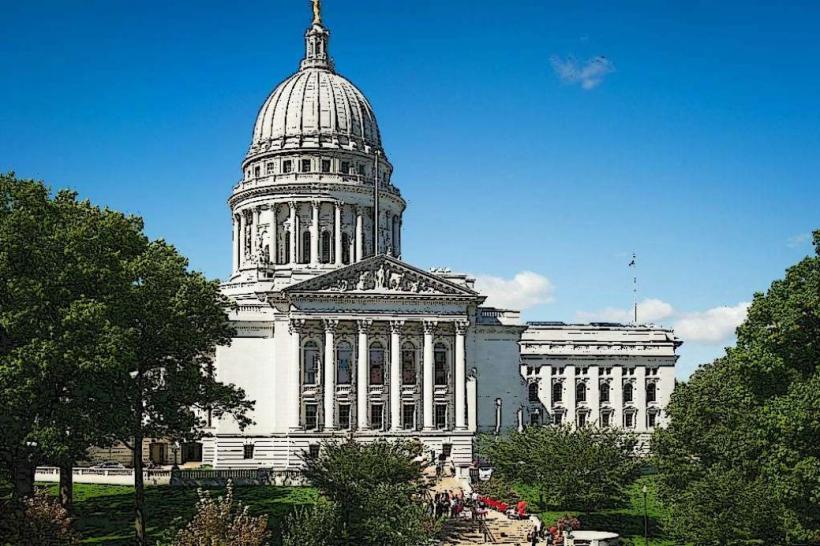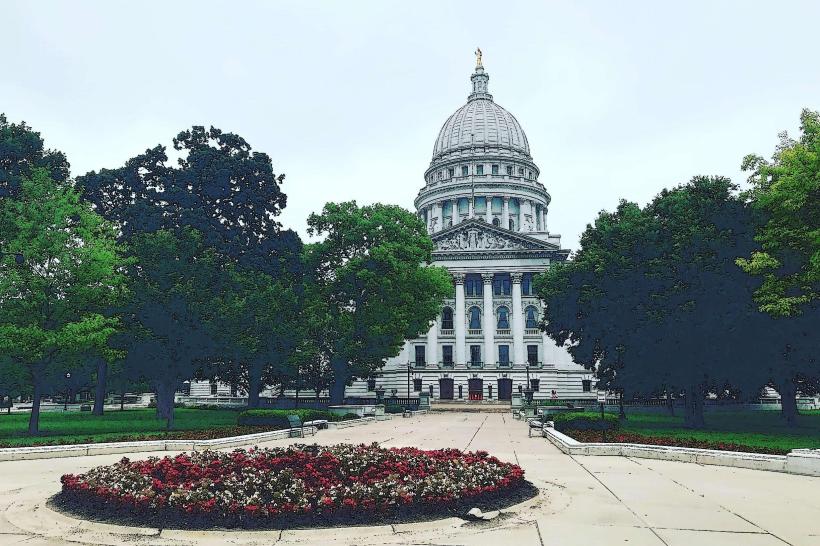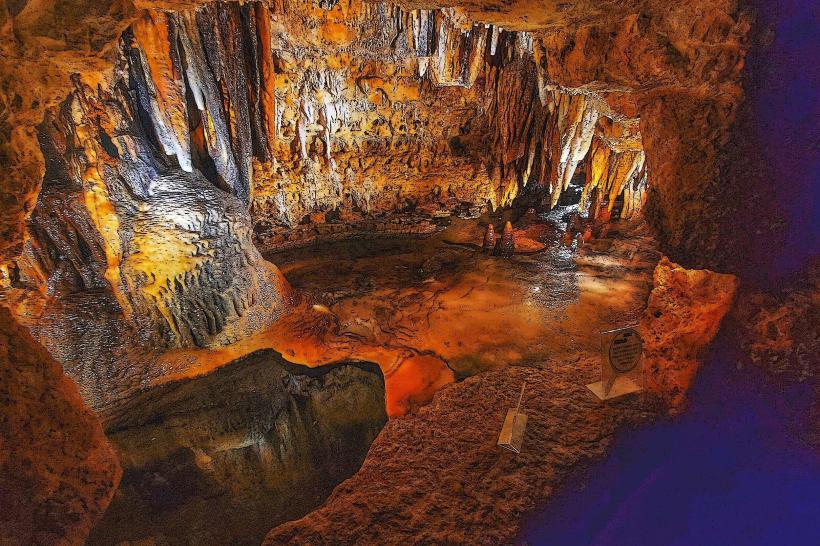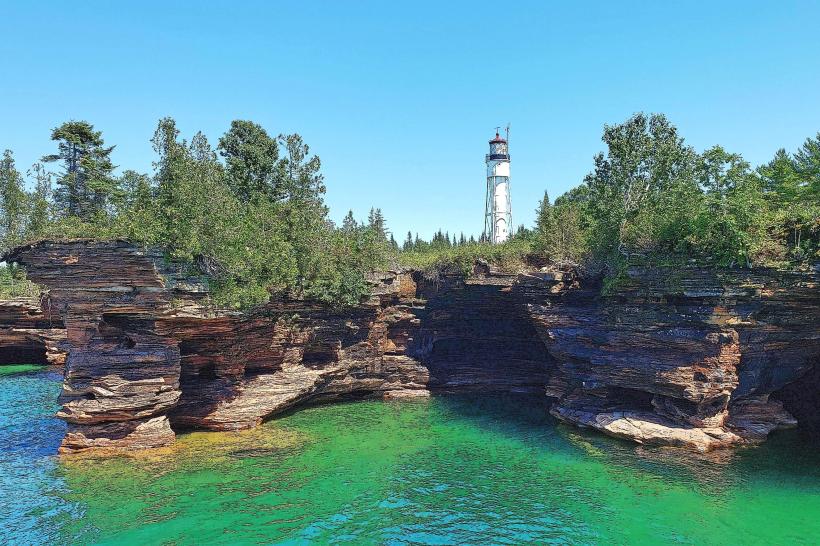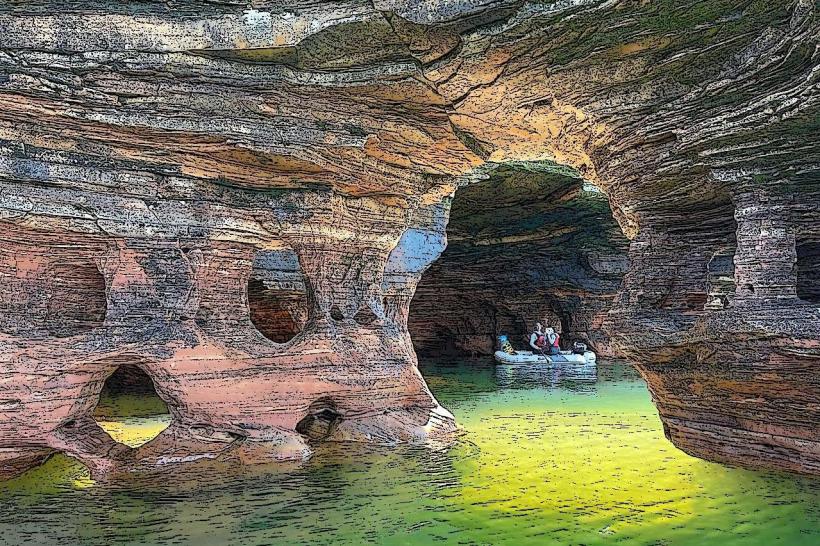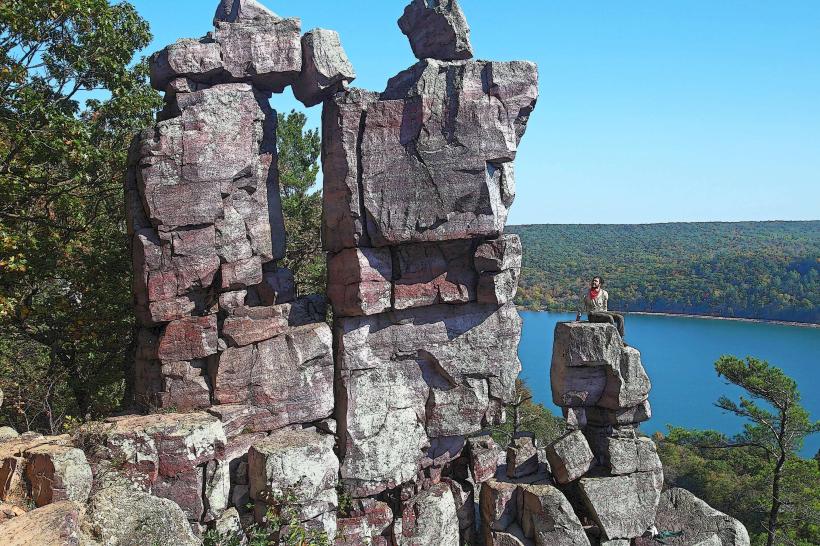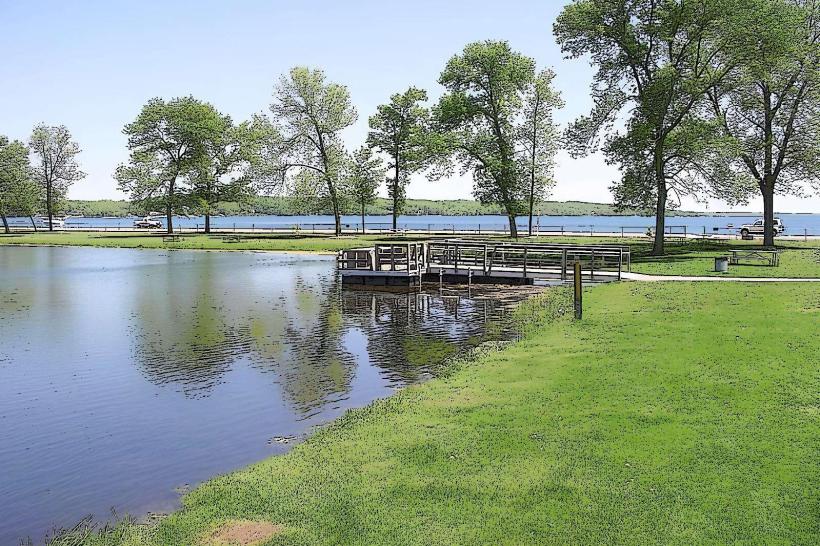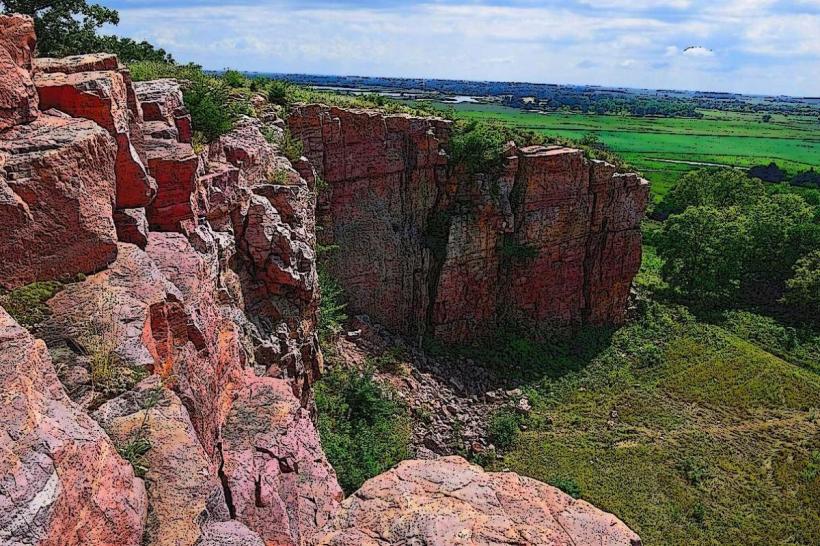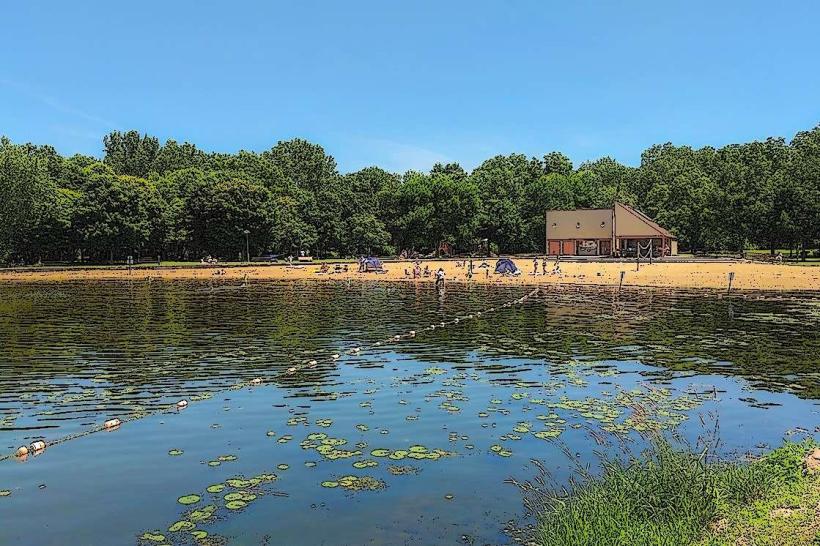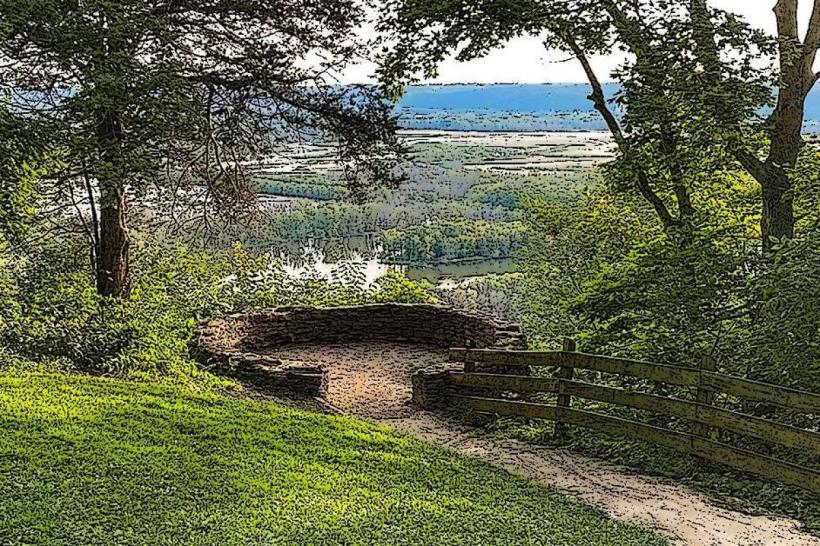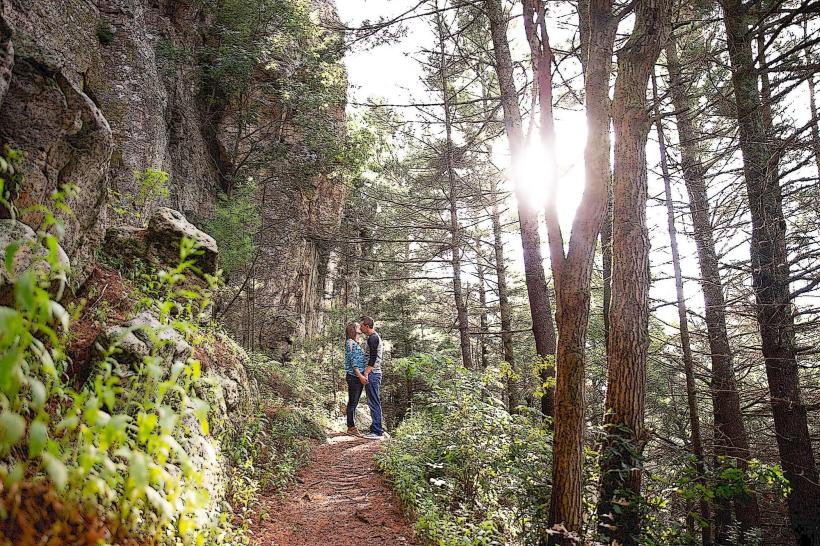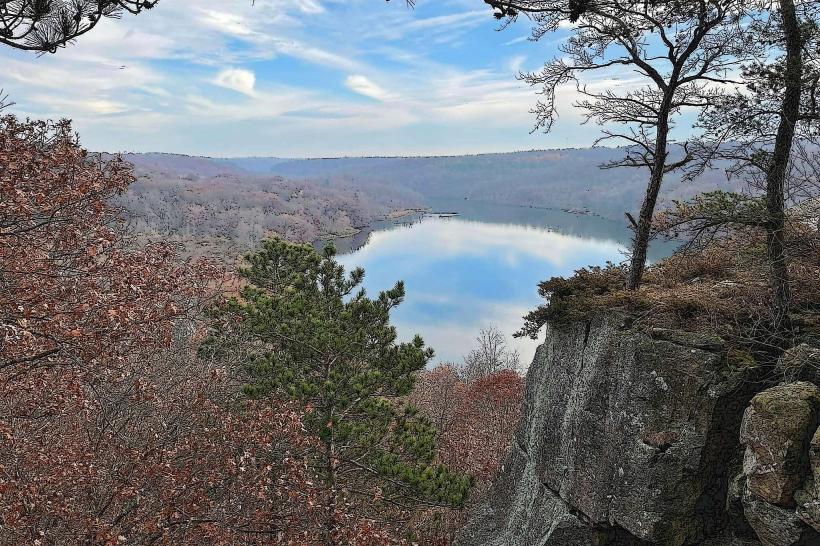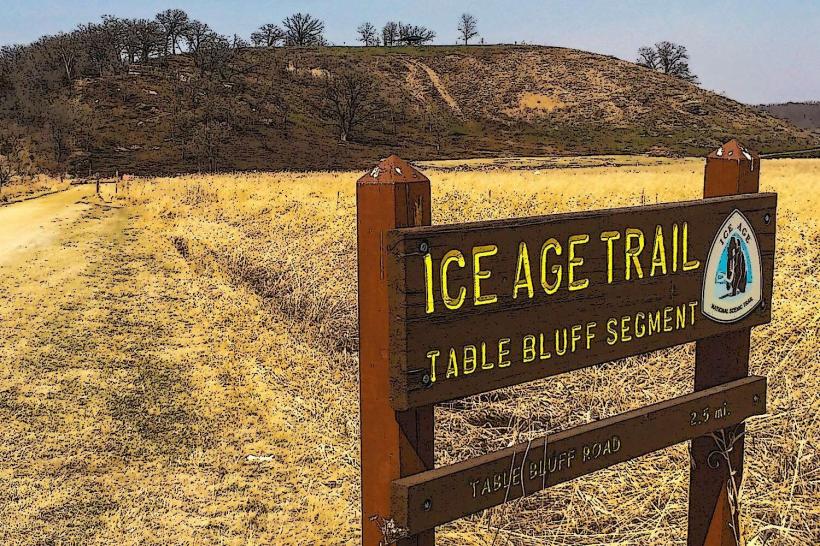Information
Landmark: Apostle Islands Ice CavesCity: Madison WI
Country: USA Wisconsin
Continent: North America
Apostle Islands Ice Caves, Madison WI, USA Wisconsin, North America
The Apostle Islands Ice Caves, located along the mainland section of the Apostle Islands National Lakeshore near Meyers Beach, are a rare and awe-inspiring winter phenomenon that draws thousands of visitors when conditions are safe. These natural ice formations occur when Lake Superior freezes solidly enough to allow foot access to the sandstone sea caves, which transform into frozen crystal palaces during the coldest part of winter.
Location and Formation
Main Access Point:
The ice caves are found along the mainland shoreline, about 18 miles west of Bayfield, Wisconsin, and are accessed via Meyers Beach, off Highway 13. This is the only portion of the National Lakeshore’s caves that can be reached on foot during winter, as all island caves remain offshore and inaccessible without a boat or aircraft.
Geological Base:
The caves are carved into Chequamegon Sandstone, a soft, iron-rich rock shaped by waves, wind, and glacial activity over thousands of years. In winter, cold temperatures freeze waves, mist, and water seepage from above, coating the cave walls and ceilings with immense icicles, frozen waterfalls, and walls of ice.
The Winter Spectacle
When conditions are ideal and Lake Superior’s surface freezes thick enough (usually 10–12 inches minimum), visitors can walk across the frozen lake from Meyers Beach to explore the cliffs and caves. Here’s what makes the experience so unique:
Frozen Waterfalls:
Water that seeps through cracks in the sandstone freezes mid-drip, forming massive frozen curtains, pillars, and cascades.
Icicles and Ice Columns:
Stalactite-like icicles grow from the cave ceilings, some stretching more than 30 feet, glittering in shades of blue, white, and amber depending on light conditions and mineral content.
Color and Texture:
Depending on temperature fluctuations, the ice can range from opaque white to deep, clear blue. Delicate frost crystals form lace-like patterns on cave walls, and natural arches become glazed with glassy sheens of ice.
Soundscape:
In stillness, the ice pops, creaks, and booms underfoot and overhead, adding a surreal auditory layer to the frozen landscape.
Access Conditions and Safety
Unpredictable Availability:
The ice caves are not accessible every winter. Safe access depends on:
Prolonged subzero temperatures (typically January–February)
Absence of strong offshore winds that could break up the ice
Stable ice thickness as assessed by the National Park Service
Safety Monitoring:
The National Park Service carefully monitors ice conditions and posts regular updates. When safe, they open the route, and thousands visit-often over 10,000 people on a single winter weekend.
Hiking Conditions:
The hike from Meyers Beach to the caves is roughly 1 to 1.5 miles one way over ice, depending on where the caves are explored. The hike involves:
Uneven, slippery ice
Strong, cold lake winds
Little to no shelter
Risk of ice breakage if conditions are not ideal
Preparing for a Visit
What to Wear:
Heavy, waterproof boots with strong grip or ice cleats
Multiple layers of thermal clothing
Windproof outer layers
Hats, gloves, and face coverings for wind chill
What to Bring:
Water and snacks
A charged phone or emergency beacon
Flashlight or headlamp (if arriving early or staying late)
Crampons or trekking poles for balance
Cash or card for parking at Meyers Beach
Timing Your Visit:
Early mornings are less crowded
Weekdays offer more solitude
Weather can shift rapidly, so always check forecasts and official conditions before arrival
Facilities and Logistics
Parking:
Located at the Meyers Beach lot. A parking fee is typically charged during ice cave season.
Restrooms:
Limited, often only portable toilets available in winter.
Local Support:
Nearby Bayfield offers gear rentals, winter lodging, cafes, and warming areas. Many local outfitters provide weather and safety advice.
Environmental Caution
The caves are delicate and highly susceptible to damage. Walking or climbing on formations is strictly prohibited to preserve the natural structures. Visitors are urged to leave no trace and follow Leave No Trace principles.
Nearby Attractions (Winter-Friendly)
Bayfield Ice Road (to Madeline Island): When Lake Superior freezes deeply enough, a car-accessible ice road connects Bayfield to Madeline Island.
Snowshoeing and Cross-Country Trails: The mainland section of the Lakeshore and nearby Chequamegon National Forest offer extensive winter trails.
Apostle Islands Visitor Center (Bayfield): Open year-round with exhibits, maps, and updates on lake conditions.
Summary
The Apostle Islands Ice Caves are a fleeting but unforgettable winter experience that merges art, geology, and nature into one breathtaking setting. When the stars align-deep cold, calm lake, thick ice-visitors can witness one of the most otherworldly natural events in North America. It’s not guaranteed every winter, but when it happens, it becomes a once-in-a-lifetime journey across a frozen inland sea.


